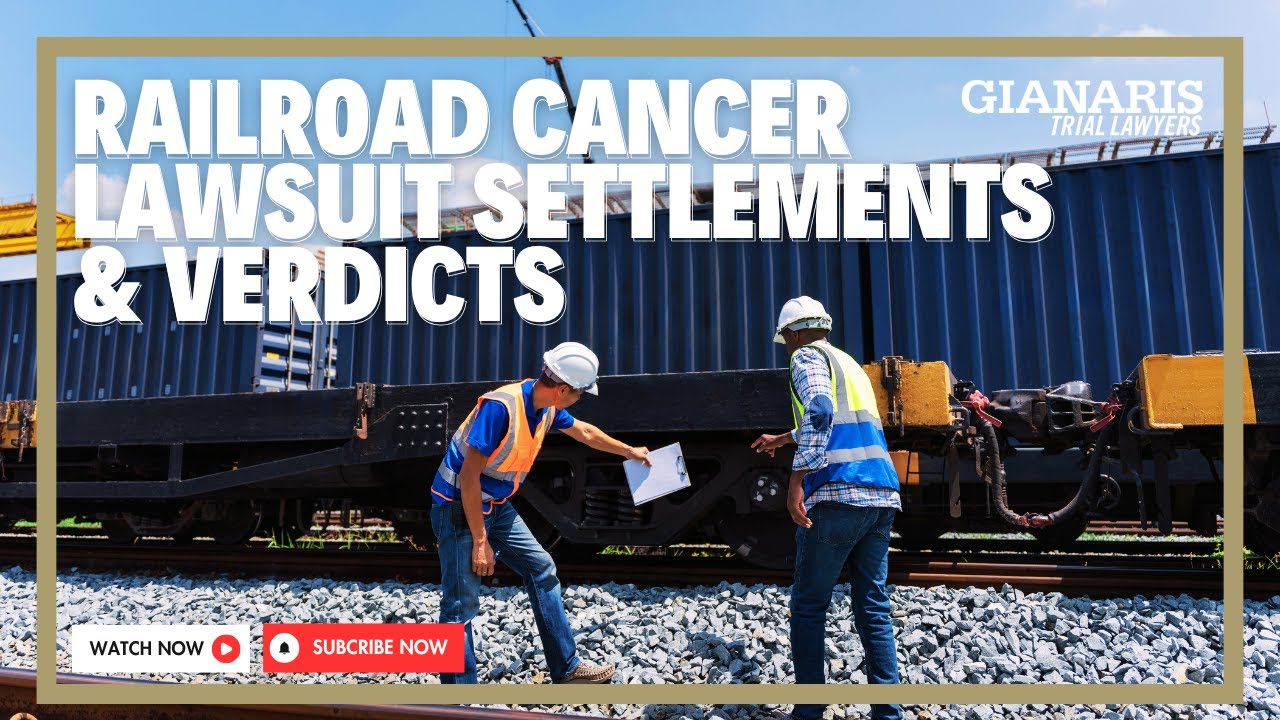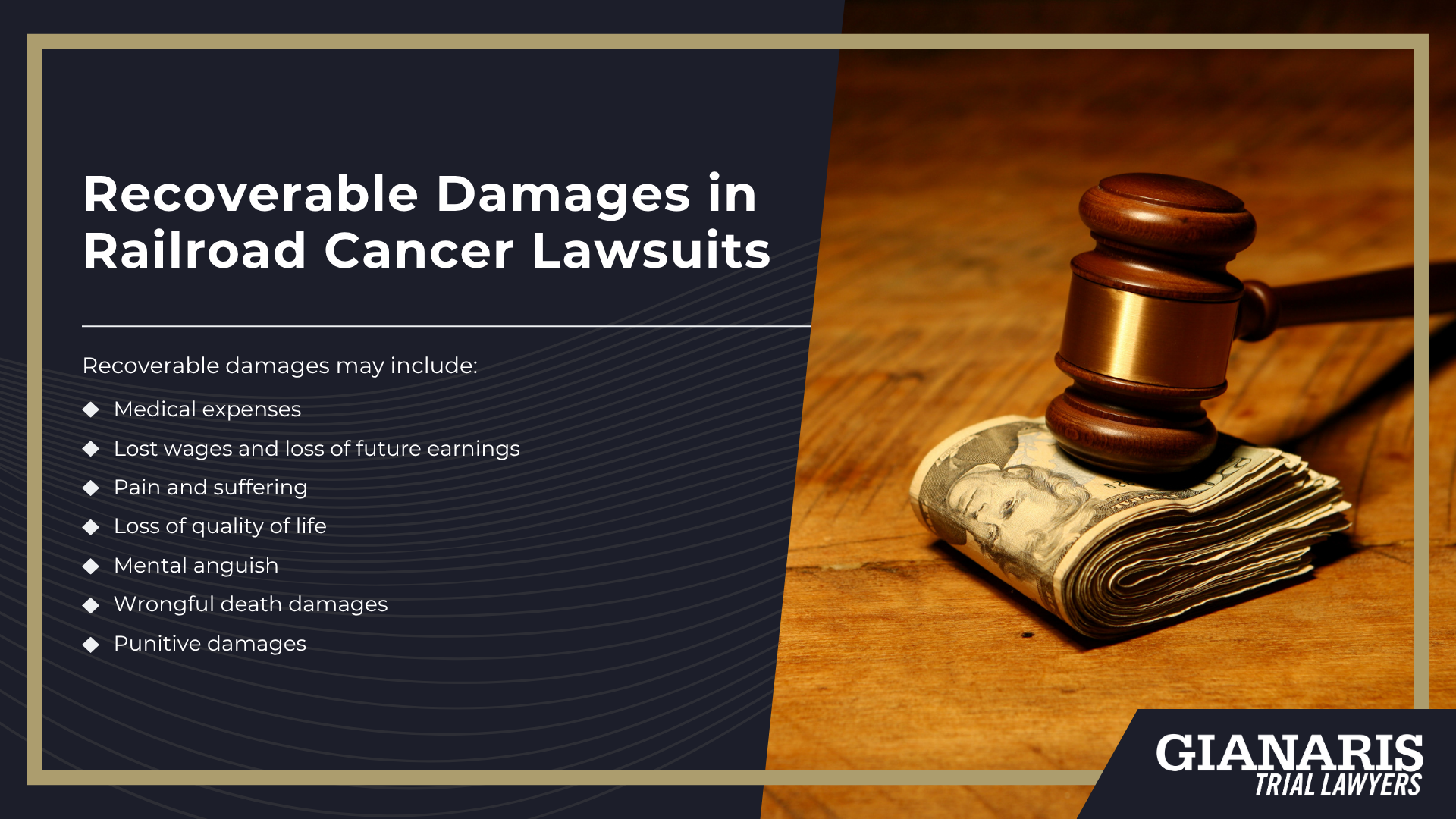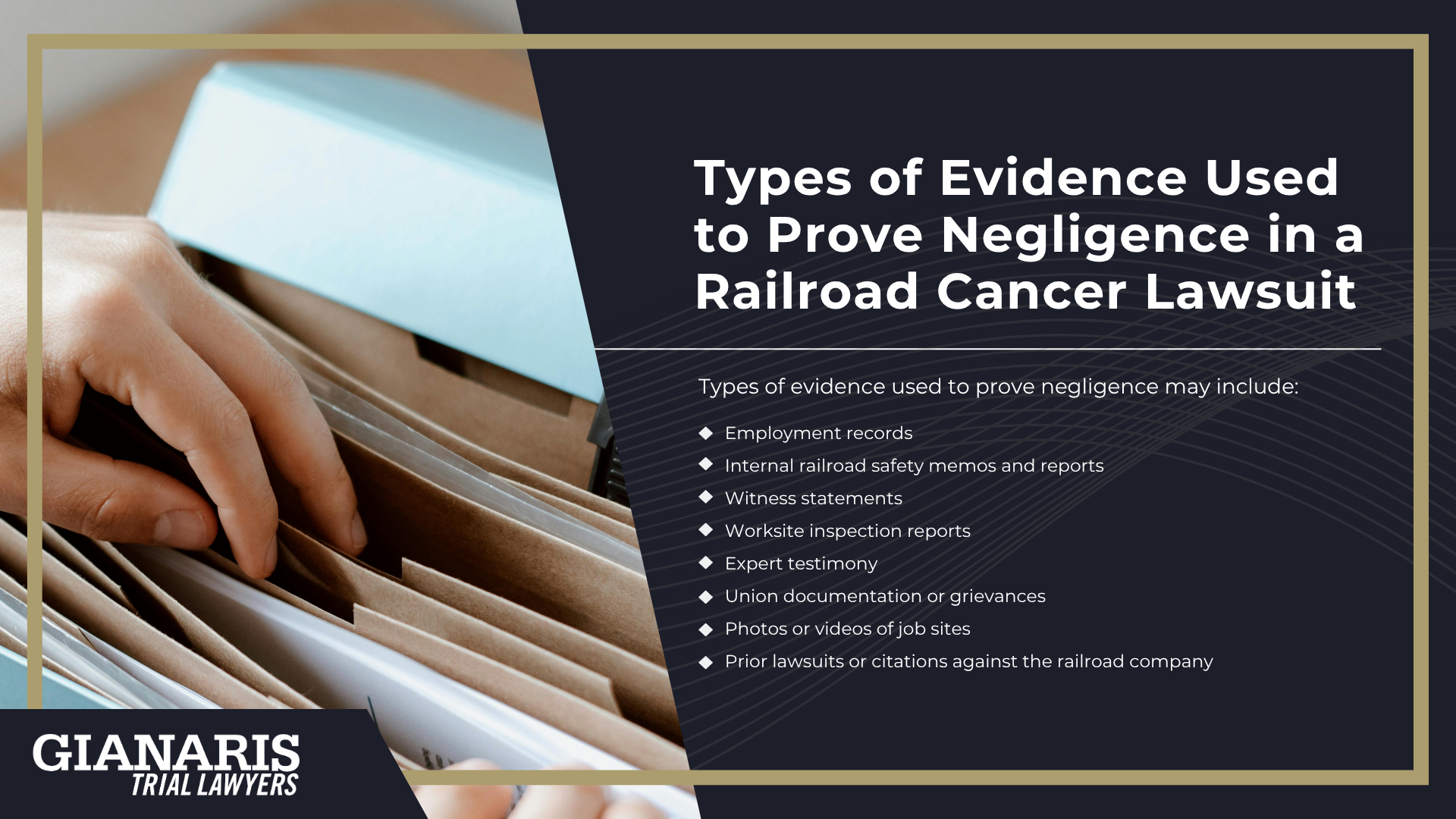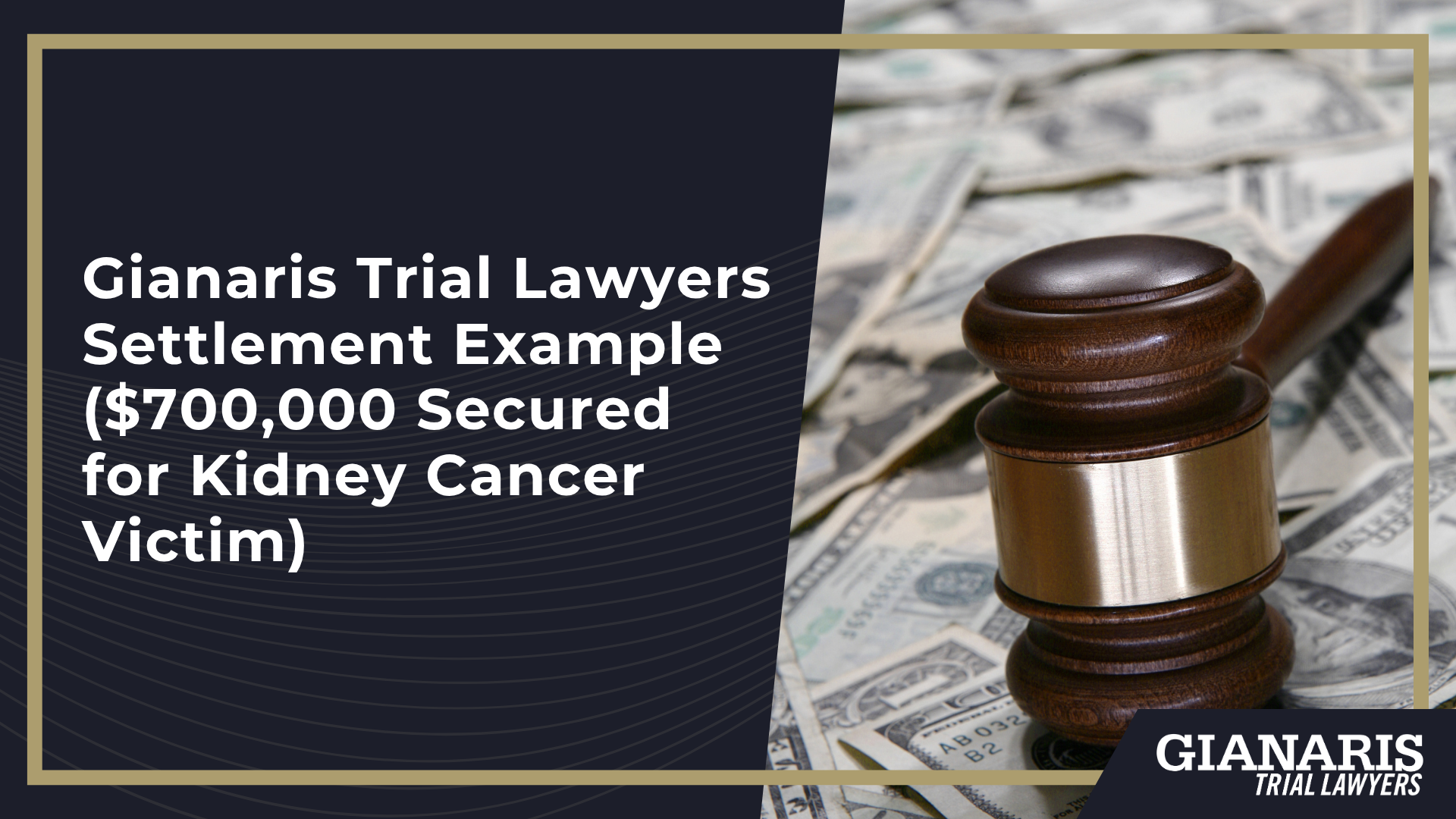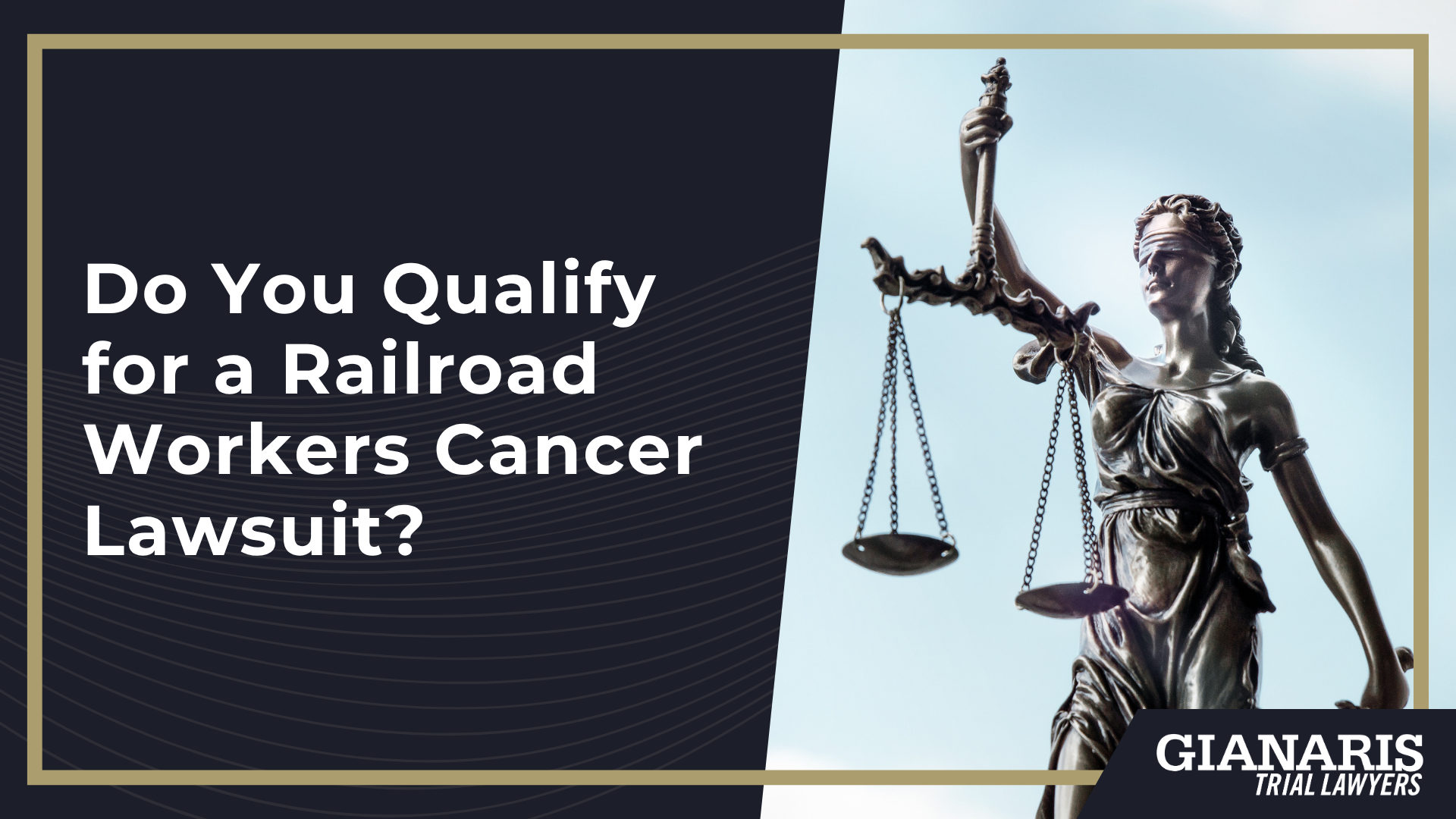In lawsuits involving toxic exposure and cancer diagnoses among railroad employees, compensation can vary significantly depending on a range of factors.
This may include the type of cancer, degree of workplace exposure, responsible railroad employers, and how long the worker was frequently exposed to dangerous substances such as diesel fuel, benzene, welding fumes, and asbestos insulation.
Many railroad cancer cases have demonstrated that employers failed to warn workers about the long-term health risks of their jobs, despite widespread use of hazardous materials like asbestos-containing products, contaminated railroad ties, and other industrial toxins.
Those diagnosed with mesothelioma, lung cancer, kidney cancer, bladder cancer, or other occupational illnesses due to toxic exposure on the job may be entitled to seek compensation for medical costs, lost income, and pain and suffering.
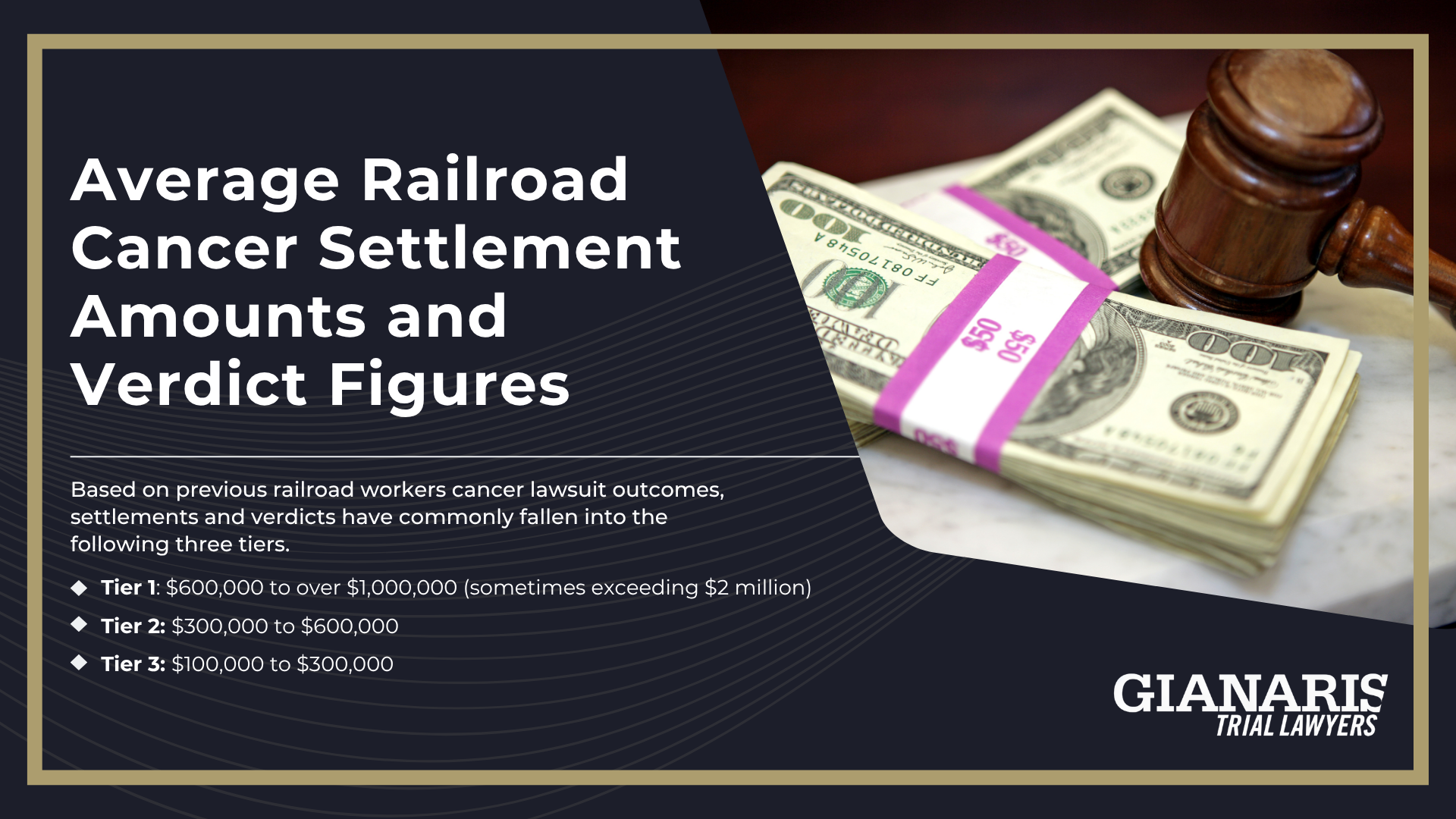
Based on previous railroad workers cancer lawsuit outcomes, settlements and verdicts have commonly fallen into the following three tiers.
Tier 1: $600,000 to over $1,000,000 (sometimes exceeding $2 million)
These settlements and verdicts typically involve cases with aggressive or fatal cancers such as mesothelioma, advanced-stage lung cancer, or multiple organ involvement.
Claimants in this tier often had a clear, well-documented history of prolonged exposure to diesel exhaust, asbestos exposure, or benzene exposure.
Victims in Tier 1 may include railroad employees who worked decades in environments with little to no protective equipment, such as roundhouse workers, brake mechanics, or those who maintained locomotive parts manufactured with hazardous substances.
Tier 2: $300,000 to $600,000
Tier 2 cases generally involve severe but less immediately fatal cancers, such as kidney cancer or bladder cancer, linked to prolonged diesel exhaust exposure or direct contact with welding fumes and railroad solvents.
Railroad workers who held roles with intermittent exposure or whose railroad employers implemented some but not adequate safety measures often fall into this range.
Tier 3: $100,000 to $300,000
This tier includes cases with less extensive documentation, shorter durations of toxic exposure, or where the connection between toxic substances and the cancer diagnosis is less direct.
These cases may involve early-stage cancers or chronic illnesses linked to railroad work, where medical intervention was more effective or symptoms less debilitating.
Why Do Railroad Cancer Settlement Amounts Vary So Widely?
The value of a railroad workers cancer lawsuit depends on numerous factors.
These include the specific diagnosis (e.g., kidney cancer vs. bladder cancer), the extent and duration of workplace exposures, whether the railroad company failed to warn workers of known dangers, and the quality of available evidence, such as medical records and employment history.
Jurisdictional differences, the presence of surviving family members in wrongful death cases, and the quality of legal representation can also heavily influence settlement outcomes.
Important Disclaimer
These settlement ranges are estimates based on past railroad cancer claims and should not be interpreted as a guarantee of compensation.
Each case is unique, and outcomes are influenced by the facts specific to that claim.
Compensation can vary dramatically depending on the strength of evidence, the railroad employer’s safety history, and the documented effects of toxic exposure.
It is essential to consult with an experienced railroad cancer attorney to assess your eligibility, gather necessary documentation, and understand your legal options.

